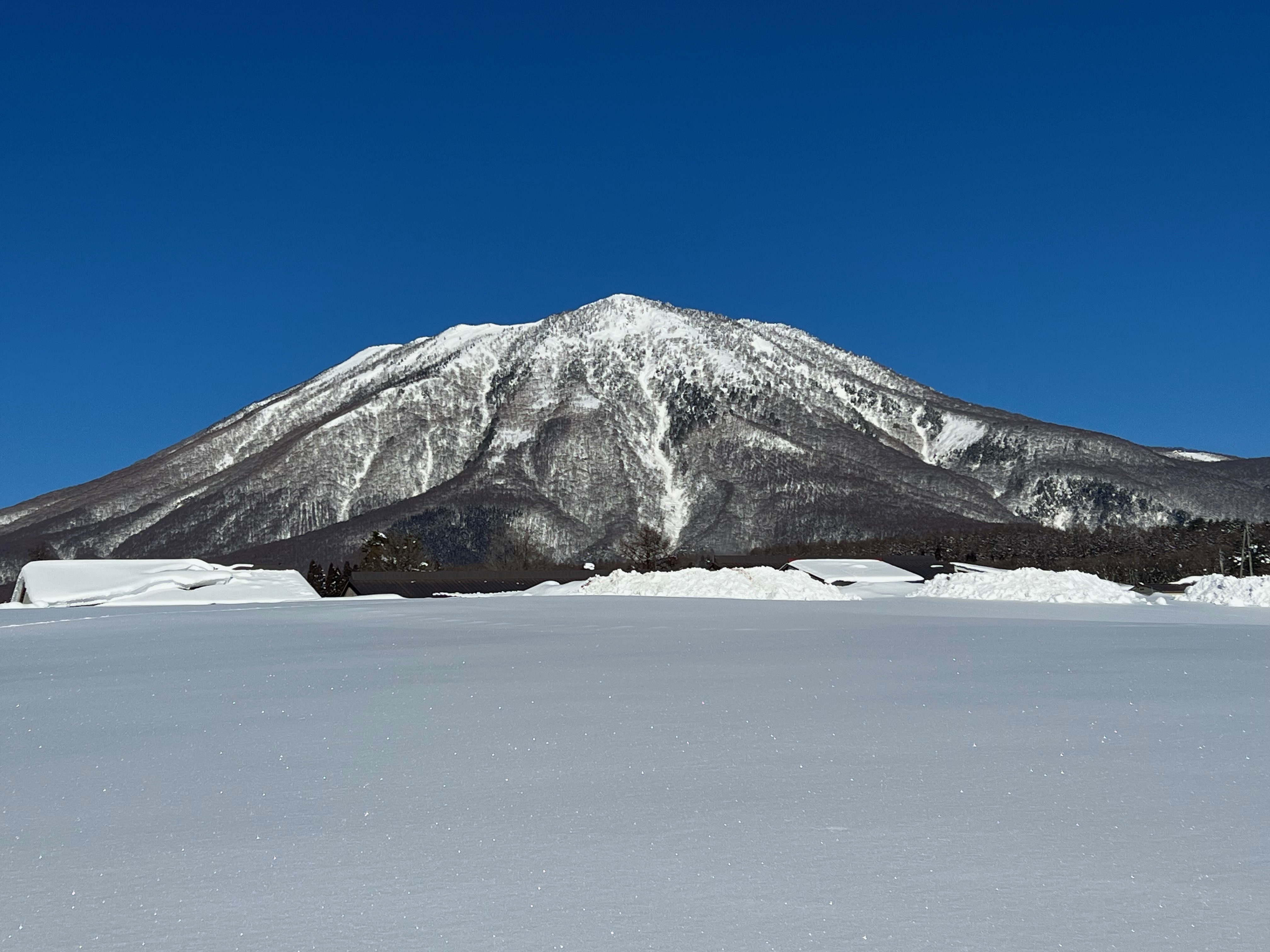


Mount Kurohime, Izuna and the Togakushi Ridge Line
We have been living in Nagano for over ten years — and 2022 is the snowiest winter in our memory. The accumulation on our mountainside property is well over two meters and we awake most mornings to the sound of the local snow plow clearing the 800 meter gravel path from the prefectural road up to our property. There is now a mountain of snow nearly five meters high towering over the entrance to our driveway — the snow melt is going to be a mess!
Not surprisingly the snowy weather coupled with the pandemic, which is entering its third year in Japan, has impacted the wine industry in Nagano. Wine sales are down in part because Japan is a country where wine, as a “foreign” beverage, is generally consumed not at home but instead at restaurants — and these are by and large closed as a health measure.
Although it is still too early to tell, the heavy snow we are experiencing likely is causing damage to the vines especially in the higher elevations where many of the newer and smaller wineries are increasingly located. A related problem is the impact of the unusually hot summers we experienced in 2019 and 2020. The heat wave compressed the diurnal difference in temperatures resulting in more than a few wines with markedly lower levels of acidity, which can make them taste a flat and listless — a problem that we encountered as we sampled a relatively broad group of 2019 and 2020 wines over the past few weeks.
Of course, the terroir across the prefecture is highly varied and the industry is too young to start talking about “good” and “bad” years for Nagano wines. Yet this issue coming together with the pandemic has introduced a note of caution into the “go-go” outlook for wines in the prefectures. Adding to the uncertainty, the popular Nagano City, Suzaka and Shiojiri wine festivals, which brought together the local wine community and showcased Nagano wines within and outside the prefecture remain on hold due to the pandemic although there are attempts to convene them virtually.


. Snowshoeing in the Nagano Woods
After several false starts due to the vagaries of the pandemic (and after spending three long days in government mandated quarantine at a Shinagawa hotel) Mariko finally was able to return to Japan from New York City in January. We took the occasion to schedule separate day-long visits to the Kikyogahara Wine District centered around Shiojiri city and to the Chikumagawa Wine that embraces the areas around Tomi and Ueda cities. It was the first chance since the outbreak of the pandemic in February 2019 for both Jim and Mariko to get out to meet with the growers, sample a variety of wines, and get a more contextual feel for where the wine industry is going in Nagano.
We want to give special thanks to Suntory chief winemaker Kentaro Shinoda, Votana Winery owner Mitsuhiro Tsunoda, and Funky’s Chateau’s wine making couple Toyohiko and Michiko Kanehashi for making time to meet with us.
Mr. Shinoda spoke to the challenges even a large and experienced winemaker such as Suntory has faced during the pandemic. He said that while a date for the release of the next vintage of Suntory’s Shiojiri Nagano series wines has not yet been set, he expects some new and interesting wines will be available soon across Suntory’s Japan product line of wines, reflecting Suntory’s interest in marketing to the next generation of wine drinkers. A forerunner of this is clearly the “One Wine” series of “single glass” canned wines introduced to the market in October 2021. The company is selling a four pack made up of Sauvignon Blanc, Chardonnay, Pinot Noir, and Merlot wines clearly targeted at Japan’s Millennial and Generation Z. The wines that go into this new beverage are from France not Japan, but this initiative is long overdue and a necessary precursor to creating a new wine culture in Japan,
The Kanehashi’s from Funky Chateau gave us the “backstory” as to how two emigres from Tokyo are producing great wines from a small vineyard literally carved out of a mountain. They produce only organic wines and the Funky Chateau winery is widely admired in and out of Japan. Not surprisingly, they are great advocates and examples of the future of red wines in the Nagano environment and they gifted us with bottles of their Cabernet Sauvignon and Sangiovese wines. Good Cabs are notoriously difficult to produce in Nagano and the Sangiovese grape is virtually unknown.
Votano Winery’s Mr. Tsunoda is a charismatic one-man show, who is focusing on making great wine. We caught up with him in the afternoon and did an impromptu tasting of some of his best wines. We wrote about his 2019 Syrah this past October and review two of his 2019 Merlots and a 2019 Sauvignon Blanc below. Spoiler alert: we like them a lot.
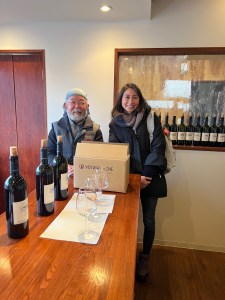

Mariko with Mitsuhiro Tsuruoka and Michiko Kanehashi
During our travels, we dropped by several other wineries, including Izutsu, Goichi, and Shinshu in Shiojiri City and the Chateau Mercian Mariko Vineyard in Ueda City. We also checked out the outlet shop that the ALPS winery operates at the entrance to Shiojiri Train Station. The shop carries the full range of ALPS products from its supermarket wines to the high-end Dynastie brand. We were particularly intrigued by a new wine released in 2020 called “Deuce”, which is a blend of two Japanese varietals: Muscat Bailey A and Black Queen. We found the wine to be a good choice for a BBQ: it has strong flavors of currant and figs that complement rather than are overwhelmed by our favorite Kansas City BBQ sauce and the price at 1500 yen is spot on.
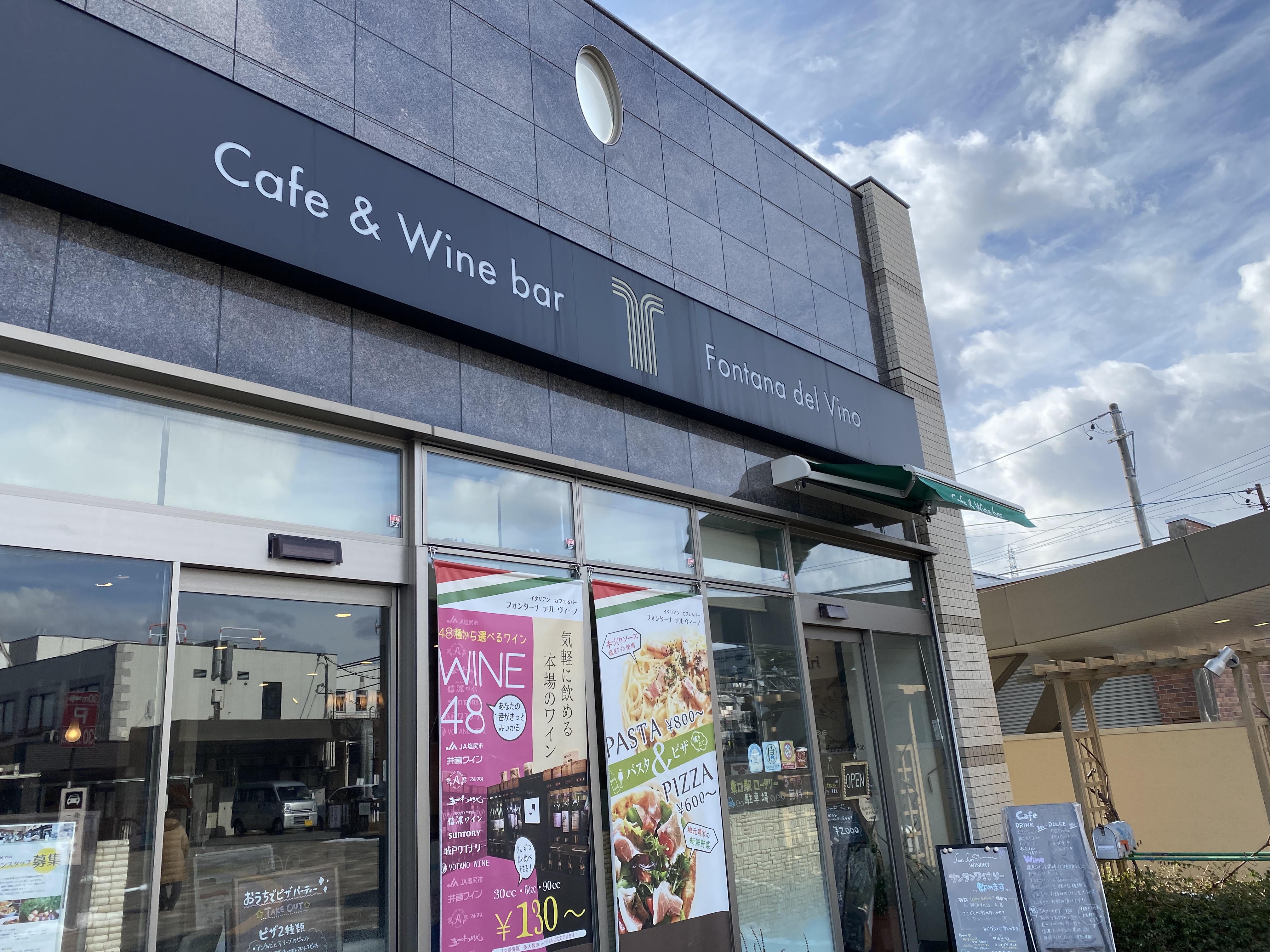

Fontana del Vino
Tasting was not available at the wineries or the ALPS outlet due to the pandemic, but we still managed to try out a large range of local wines by stopping by at two innovative wine cafes. Fontana del Vino is located next door to Shiojiri Station and managed by Kenichi Nonaka. The pasta and pizza menu was a perfect complement to the 30-plus local wines available for tasting. For more information see here. In the Chikumagawa Wine District, we checked out the Tomi Wine Chapel (previously mentioned in our January 2022 blog). The “chapel” lived up to its reputation, offering a full range of local wines and foods selected to complement the tasting. Sommelier Hiroko Ishihara was deeply knowledgeable about the wines and happy to welcome foreign visitors.
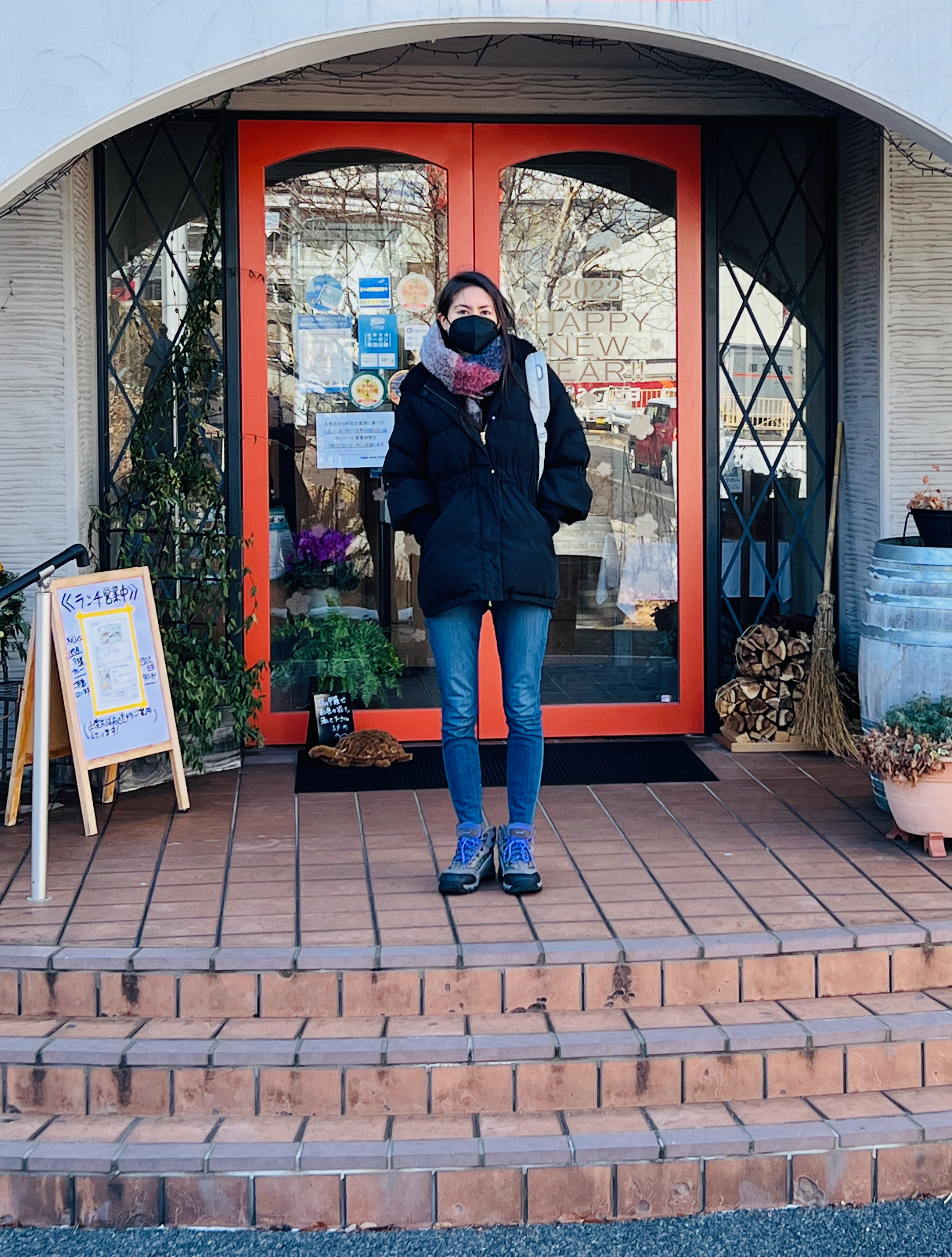
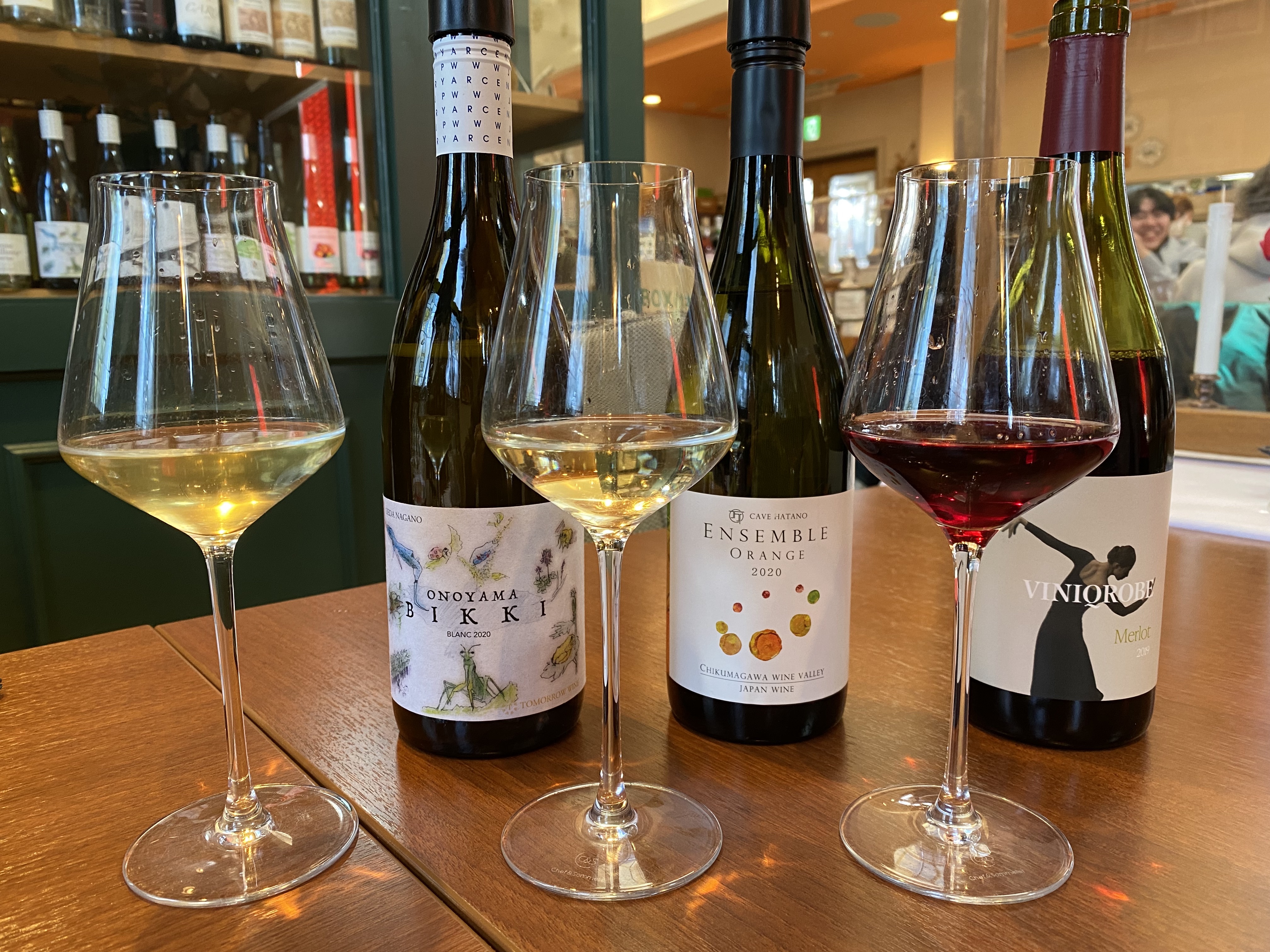
Our last stop was the Chateau Mercian Mariko Vineyard. The latter is another must-go destination, which we first visited and reviewed in February 2020. Located in Ueda City, the vineyard was planted in 2003 and the winery opened in 2019. The current facility was designed with visitors in mind and boasts a beautiful tasting room overlooking the vineyard. Another attraction is that some select wines made onsite are only available for sale at the winery.

Tasting Room at Chateau Mercian Mariko Vineyard
The parent company of the Mariko Vineyard and the Chateau Mercian brand is Kirin, which along with Suntory is among the top beverage companies in Japan. Despite this strong lineage, we were somewhat disappointed by the imbalance between price and performance in the wines we tasted (the beauty of view notwithstanding) — a Chardonnay, a Merlot, Syrah and a Sauvignon Blanc — and we want to return to do a more thorough assessment. With the Mariko Vineyard only coming online in 2019, there may be a bit of a steep learning curve.
Overall, the two trips were a good chance to reconnect in-person with the Nagano wine scene after a nearly two years gap due to the pandemic that for the most part forced us to stay in touch with developments through the lens of our favorite retailer, Yorozuya, and its selection of new and different wines from Nagano.
Clearly, we cannot predict the future course of the pandemic nor its ultimate impact on the still nascent development of a “wine culture” in Japan. Restaurants are still operating under COVID constraints and two of our expatriate French friends, one who imports small batch French wines and another who runs a hip French wine restaurant in Tokyo say the situation is difficult. Compounding the issue is climate change — winters marked by unusually heavy snows and summers that are too hot and too wet. These problems are not unique to Japan: they are global. But they can impact disproportionately on the wine industry in Nagano that is still trying to find its way. This said, we are personally confident that our friends in Nagano are equal to the challenge.

There is an old saying in English that “three times is a charm”. And it is certainly applies to our visit to the Votano Winery, which is on the outskirts of Shiojiri city. It is located in the Narai river basin with its gravelly soil that is considered the top location for viticulture in the Kikyogahara District. So far, so good — but while the area is relatively compact, the winding topography of river, the narrow farm roads, and the location of the Votano winery on a wooded bluff overlooking the river valley makes the winery difficult to locate even with a car navigation system.
In fact, we had tried two times before over the years to find the winery and meet its owner, Mitsuhiro Tsuruoka — but each time gave up. This time, we came close to doing so again, but luckily happened to pass a local postal office where Mariko was able to confirm the address and the directions. We still ended up walking the last 100 or so meters since the steep and narrow entrance did not look like it could accommodate our large van.
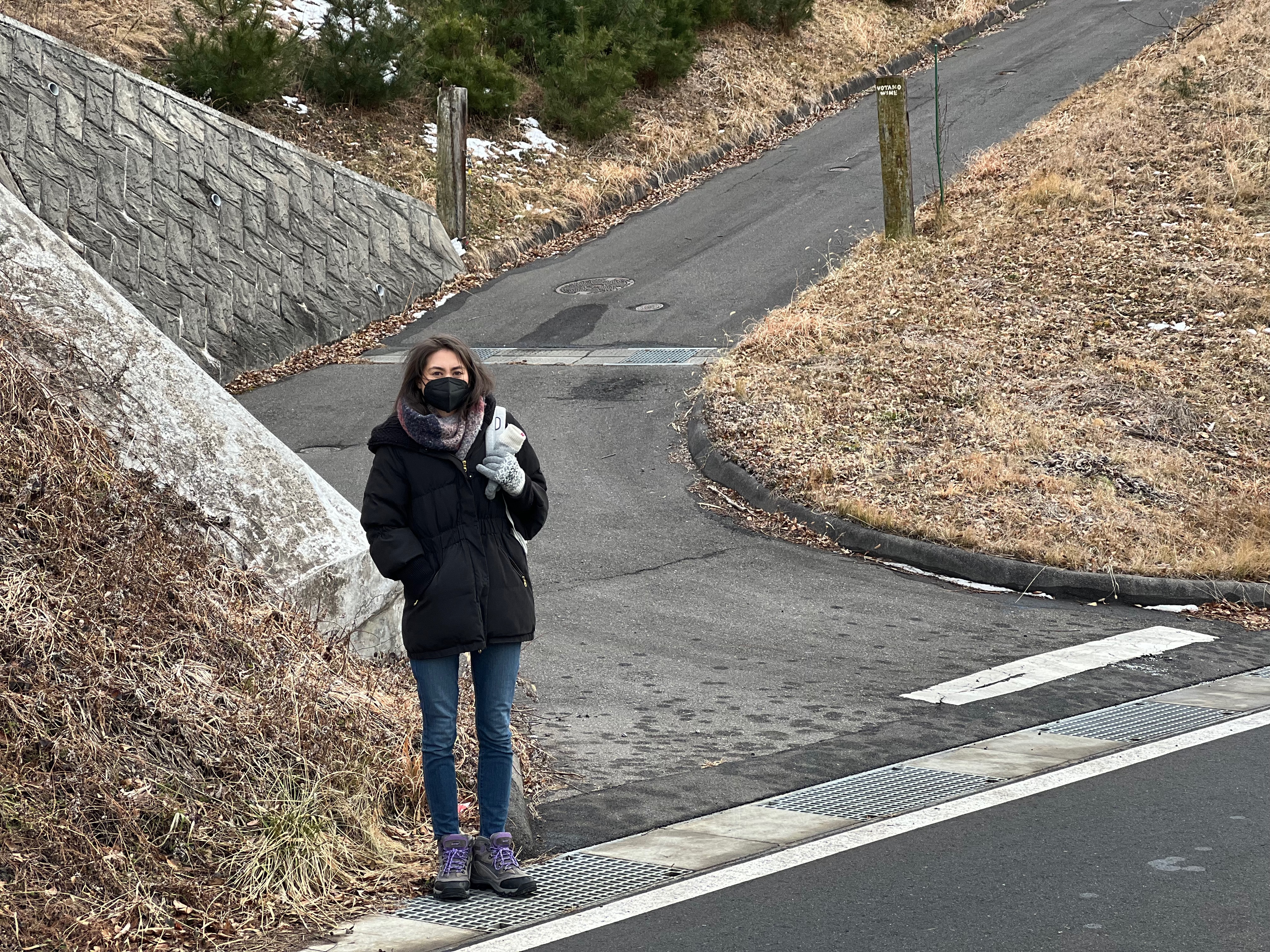
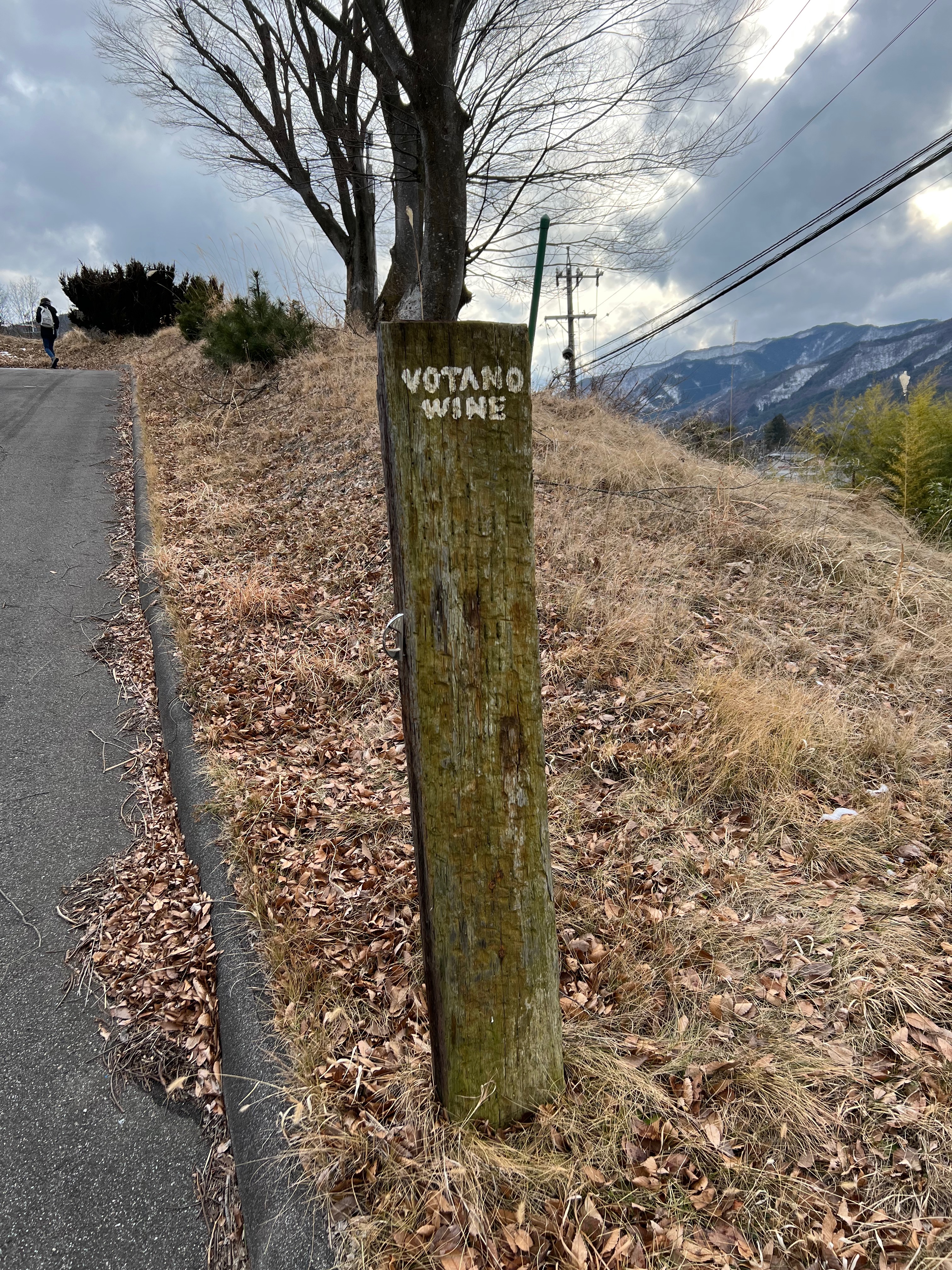
But once we arrived our luck changed! Although it was quite late in the afternoon and we had no appointment, Mr. Tsuruoka was in his office cum “tasting room” and graciously welcomed us to the winery. We stayed nearly an hour tasting the wines and talking about his favorite subject: “making good wine”. We bought four of his wines and below are our notes on what we thought about them.
Merlot Ai 2019
Available directly from the winery
Price 3500 yen
This wine is made from grapes produced by contract growers in the Kikyogahara area under the supervision of Votano Winery. It is a way around the difficulties of buying agricultural land in Japan. The color of the wine is a bit thin, but the flavor is robust, and centered around the taste of figs and red plums. Alcohol is 13 percent. The acidity is good and well balanced with the subtle presence of tannins that will become more pronounced with age. There is a pleasing sweetness on the palette. No sour flavors! Overall, this wine has a remarkable presence for something in this price range. And from a personal perspective, the 2016 vintage was the wine that first sparked Jim’s interest in Nagano wines. Jaime Goode sampled the 2016 vintage and rated it 91/100.
Merlot 2019
Available directly from the winery
Price: 4000 yen
This wine opens with an intriguing flavor of caramel enhanced by the floral scent of violet that continues straight on through to the palette. Acidity is good and balanced by relatively strong tannins. The wine has good depth and a robust purple color that affirms that it is a true Merlot. Alcohol is 12 percent. This is relatively low for a Merlot, but makes for a very drinkable wine. At 4000 yen, this wine is a real bargain and is a good foundation around which to build an evening that pairs wines with different foods. It will go particularly well with veal or roast pork
Sauvignon Blanc 2019
Available directly from the Winery at https://votanowine.info/1365-2/
4000 yen
This wine comes in an orange color (the result of leaving it on its skins during the fermentation process) that provides advance notice of the predominant flavors of grapefruit and tangerines. With 13 percent alcohol and good acidity, it is the perfect party wine and a nice aperitif to kick off a meal. It hits the palette with a smooth, clean citrus that distinguishes it from the more typical Sauvignon Blanc based wines produced in Japan.
Surah 2019 (Votano’s spelling)
Sold Out
Price 4000 yen
Jim really enjoyed this wine when served at a “tasting” he organized for friends in October 2021 (see our review). The wine seemed to herald the future potential of the Syrah grape in Nagano — and we even argued that it might supplant the Merlot grape as the mainstay for red wine production in the prefecture.
We were thus disappointed to learn that this vintage was “sold out” — so much so that Jim prevailed upon Mr. Tsuraoka to see if there might not just be one more bottle in the cellar. There was! But when we later opened it at home we were greeted by a raft of off-flavors that could be due to a faulty cork or improper storage. So we are disappointed, but Jim still stands by his October review and we looks forward to the 2020 vintage.
This said, the future of the Syrah grape may not be as bright as we have thought. We had a chance during our visit to Shiojiri to purchase a 2019 Syrah from the Goichi Winery, a 2020 Syrah from ALPS Winery, and to later sample a 2019 Syrah when we stopped by the Chateau Mercian Mariko Vineyard. They all were deficient in several respects: color was weak, the flavors of spice and pepper we so enjoyed absent, acidity low, and the finish flabby and unsatisfying.
These deficiencies are all the more striking if you read our previous enthusiastic reviews of the Chateau Mercian Mariko Vineyard Syrah 2017 (April 2021), ALPS Winery Maestro Syrah 2019 (August 2021) and the Goichi Winery Syrah 2017 (October 2021).
Of course, we need a larger database before coming to any firm conclusions — but the inconsistent performance of the Syrah grape might be linked to climate change. The summers of 2019 and 2020 may simply have been too hot and wet and the diurnal temperature differences too small to bring out the best in the Syrah grape. As a final word, it was interesting when we asked Funky Chateau’s Toyohiko Kanehashi’s views of the Syrah grape. He described it as “too difficult,” preferring to invest his time in perfecting a great Japanese Cabernet Sauvignon!


2 thoughts on “Wine Recommendations for February-March 2022”